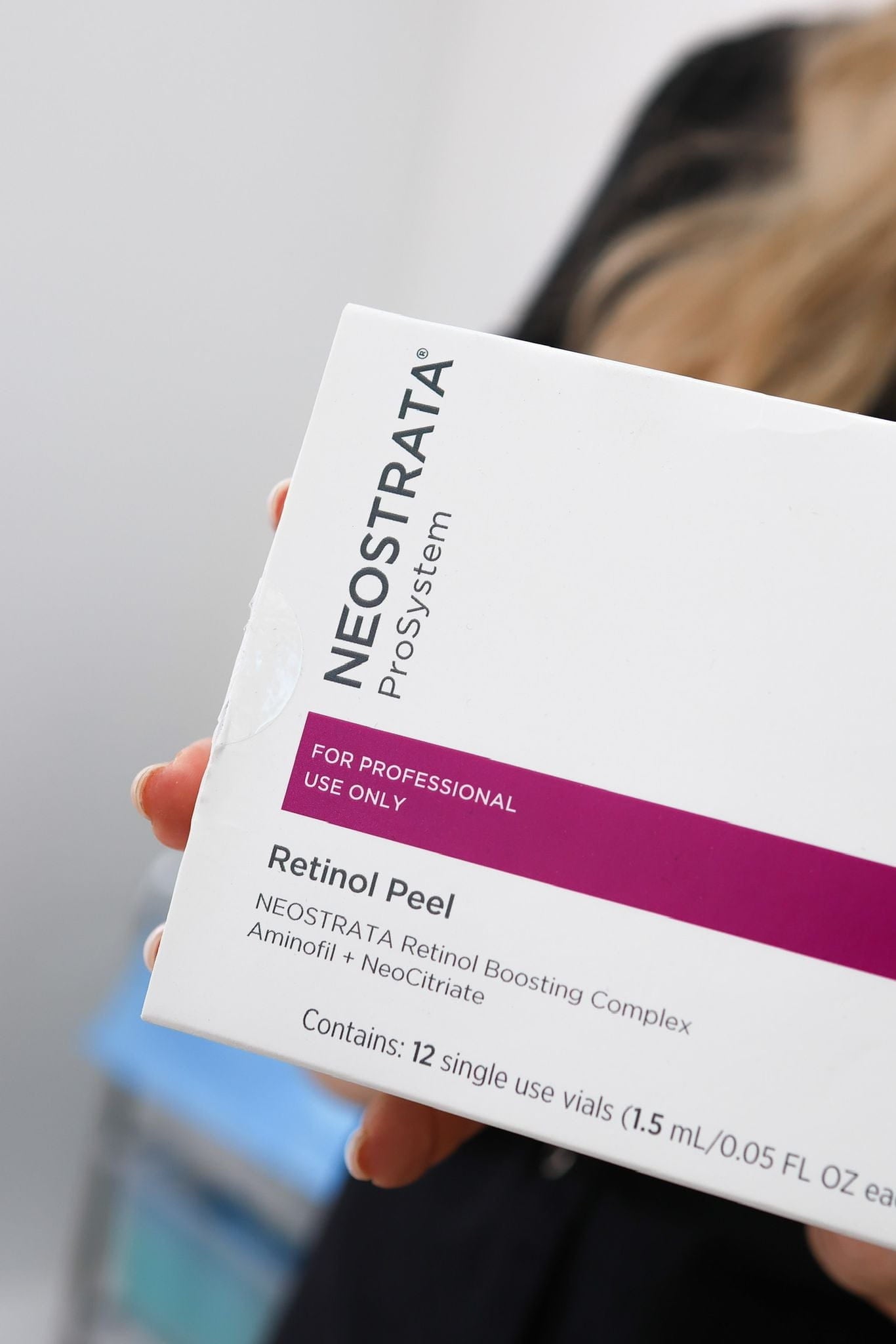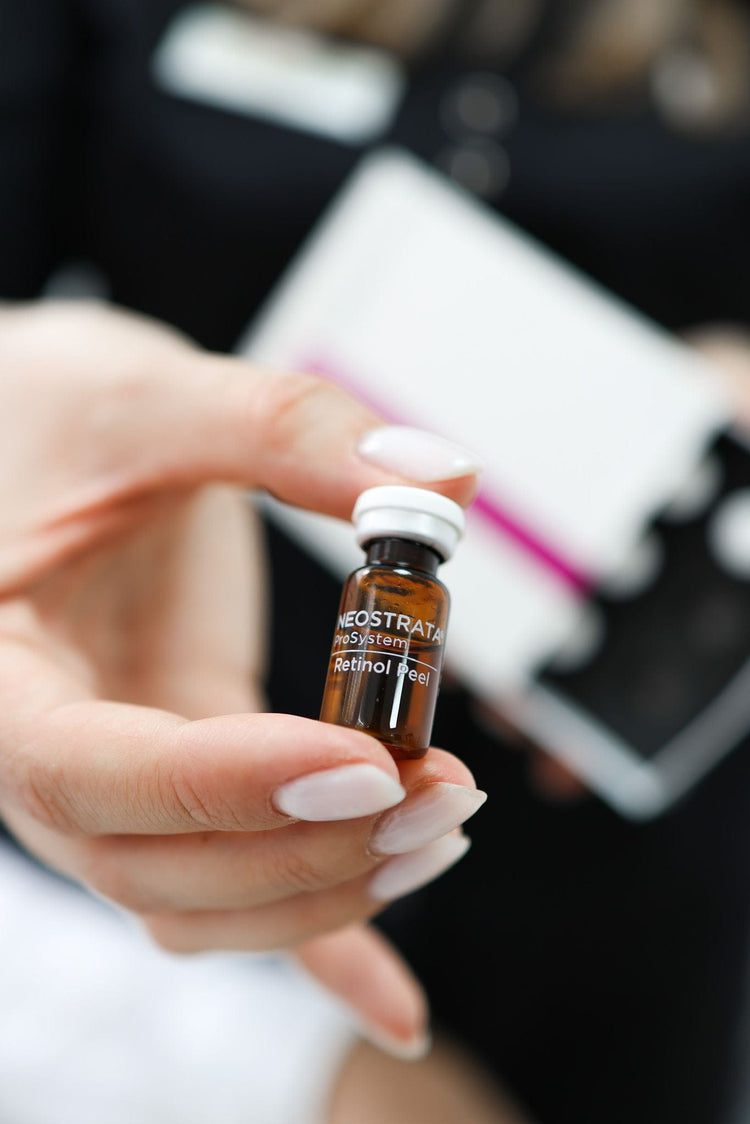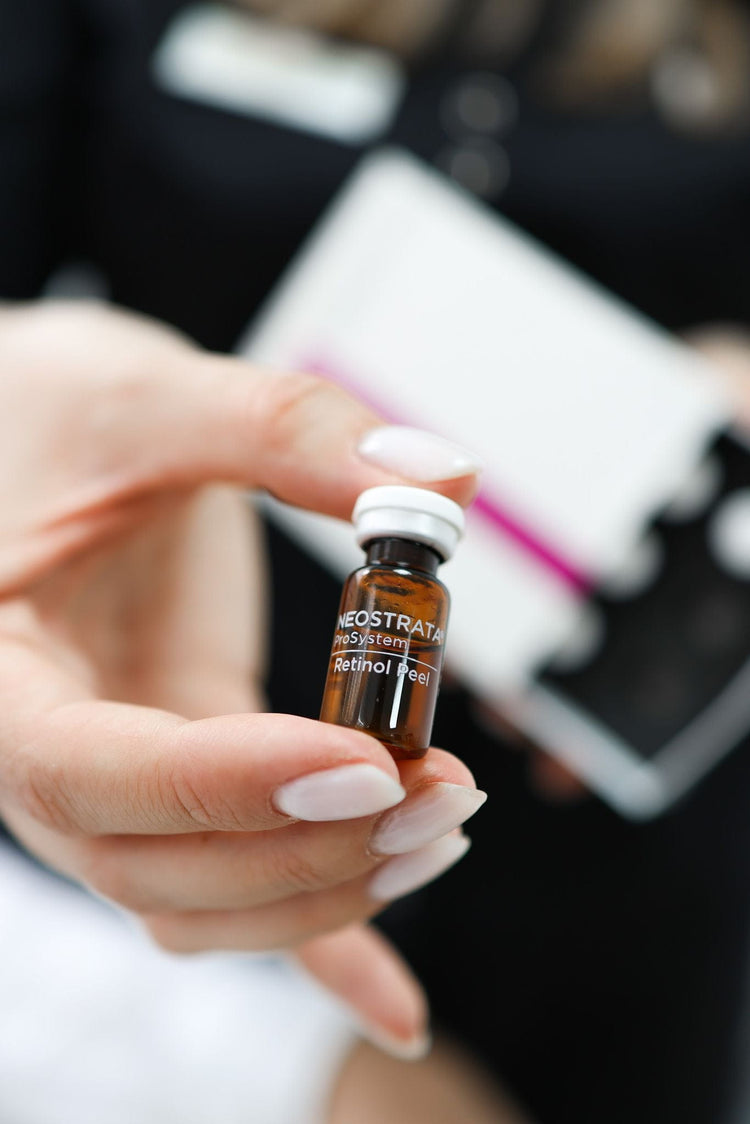How Long Does It Take To Recover From A Retinol Peel In Kingston Upon Thames
May 17, 2025
Recovery Timeline
Undergoing a retinol peel can offer numerous benefits for your skin, including reduced wrinkles, improved texture, and a brighter complexion. But like any skincare treatment, it’s natural to wonder how long the recovery process will take. If you’re considering a retinol peel in Kingston Upon Thames, understanding the expected recovery timeline is crucial.
Initial Days (Day 1-3)
In the initial days following a retinol peel (Days 1-3), your skin may exhibit signs of peeling, redness, and sensitivity. These are normal reactions as your skin sheds the old layers and reveals fresh, revitalized skin beneath. During this period, it’s essential to be gentle with your skin and avoid any harsh products or activities that could irritate it.
Stick to a basic skincare routine consisting of gentle cleansing, moisturizing with a soothing lotion, and applying sunscreen liberally throughout the day, even on cloudy days.
First Week (Days 4-7)
As you enter the second week after your retinol peel (Days 4-7), the initial peeling and redness should start to subside. Your skin may still feel sensitive, so it’s important to continue with a gentle skincare routine and avoid any exfoliating products or harsh scrubs.
- You can gradually introduce light moisturizers containing hyaluronic acid or ceramides to help maintain your skin’s hydration and promote healing.
- Avoid applying makeup during this phase, as it can clog pores and irritate your sensitive skin.
Second Week (Days 8-14)
The second week after a retinol peel (Days 8-14) marks a period of continued improvement and recovery. By now, most of the peeling should have subsided, and your skin will feel noticeably smoother and brighter. Any remaining redness should continue to fade.
You can start incorporating light, hydrating serums into your routine, focusing on ingredients like vitamin C or niacinamide, which promote collagen production and even out skin tone.
- Continue to use sunscreen diligently every day, as your newly exfoliated skin is more susceptible to sun damage.
- You can gradually reintroduce makeup products, but opt for mineral-based formulas that are gentle on the skin and avoid heavy foundation or powder.
Long-Term Effects
By the end of two weeks after your retinol peel, your skin should have significantly recovered. You’ll likely notice a reduction in wrinkles, an improved texture, and a brighter complexion. However, it’s important to remember that everyone’s skin responds differently to treatments, so the recovery timeline may vary slightly from person to person.
Long-term effects of retinol peels include continued improvement in skin tone, texture, and elasticity over several months. The consistent exfoliation helps to stimulate collagen production, leading to a more youthful appearance and reduced fine lines and wrinkles.
Factors Affecting Recovery Time
Numerous factors influence the recovery time following a retinol peel. Individual skin type, sensitivity levels, the depth of the peel, and post-treatment skincare routine all play a role in determining how long it takes for your skin to fully heal and reveal its revitalized appearance. Understanding these factors can help you manage expectations and optimize your recovery process.
Skin Type
Skin type is a significant factor affecting retinol peel recovery time. Individuals with sensitive skin may experience longer healing periods, increased redness, and heightened sensitivity compared to those with normal or oily skin.
Those with dry skin might notice peeling for an extended period as the outer layers shed more slowly. It’s crucial for everyone to follow post-peel instructions carefully, using gentle skincare products and avoiding harsh exfoliation or sun exposure.
Peel Strength
In the initial days following a retinol peel (Days 1-3), your skin may exhibit signs of peeling, redness, and sensitivity. These are normal reactions as your skin sheds the old layers and reveals fresh, revitalized skin beneath. During this period, it’s essential to be gentle with your skin and avoid any harsh products or activities that could irritate it.
Stick to a basic skincare routine consisting of gentle cleansing, moisturizing with a soothing lotion, and applying sunscreen liberally throughout the day, even on cloudy days.
As you enter the second week after your retinol peel (Days 4-7), the initial peeling and redness should start to subside. Your skin may still feel sensitive, so it’s important to continue with a gentle skincare routine and avoid any exfoliating products or harsh scrubs.
- You can gradually introduce light moisturizers containing hyaluronic acid or ceramides to help maintain your skin’s hydration and promote healing.
- Avoid applying makeup during this phase, as it can clog pores and irritate your sensitive skin.

The second week after a retinol peel (Days 8-14) marks a period of continued improvement and recovery. By now, most of the peeling should have subsided, and your skin will feel noticeably smoother and brighter. Any remaining redness should continue to fade.
You can start incorporating light, hydrating serums into your routine, focusing on ingredients like vitamin C or niacinamide, which promote collagen production and even out skin tone.
- Continue to use sunscreen diligently every day, as your newly exfoliated skin is more susceptible to sun damage.
- You can gradually reintroduce makeup products, but opt for mineral-based formulas that are gentle on the skin and avoid heavy foundation or powder.
By the end of two weeks after your retinol peel, your skin should have significantly recovered. You’ll likely notice a reduction in wrinkles, an improved texture, and a brighter complexion. However, it’s important to remember that everyone’s skin responds differently to treatments, so the recovery timeline may vary slightly from person to person.
Long-term effects of retinol peels include continued improvement in skin tone, texture, and elasticity over several months. The consistent exfoliation helps to stimulate collagen production, leading to a more youthful appearance and reduced fine lines and wrinkles.
Numerous factors influence the recovery time following a retinol peel. Individual skin type, sensitivity levels, the depth of the peel, and post-treatment skincare routine all play a role in determining how long it takes for your skin to fully heal and reveal its revitalized appearance. Understanding these factors can help you manage expectations and optimize your recovery process.
Skin type is a significant factor affecting retinol peel recovery time. Individuals with sensitive skin may experience longer healing periods, increased redness, and heightened sensitivity compared to those with normal or oily skin.
Those with dry skin might notice peeling for an extended period as the outer layers shed more slowly. It’s crucial for everyone to follow post-peel instructions carefully, using gentle skincare products and avoiding harsh exfoliation or sun exposure.
Sun Exposure
Sun exposure can significantly impact recovery time after a retinol peel. UV rays can worsen redness, irritation, and peeling, potentially delaying the healing process.
It’s crucial to avoid direct sun exposure for at least two weeks following a retinol peel.
During this period, always wear broad-spectrum sunscreen with an SPF of 30 or higher, even on cloudy days.
Protecting your skin from the sun allows it to heal properly and minimizes the risk of sun damage and hyperpigmentation (dark spots).
Tips for a Smooth Recovery
Understanding the recovery process after a retinol peel is essential for achieving optimal results.

Proper Skincare Routine
In the initial days following a retinol peel (Days 1-3), your skin may exhibit signs of peeling, redness, and sensitivity. These are normal reactions as your skin sheds the old layers and reveals fresh, revitalized skin beneath. During this period, it’s essential to be gentle with your skin and avoid any harsh products or activities that could irritate it.
Stick to a basic skincare routine consisting of gentle cleansing, moisturizing with a soothing lotion, and applying sunscreen liberally throughout the day, even on cloudy days.
As you enter the second week after your retinol peel (Days 4-7), the initial peeling and redness should start to subside. Your skin may still feel sensitive, so it’s important to continue with a gentle skincare routine and avoid any exfoliating products or harsh scrubs.
- You can gradually introduce light moisturizers containing hyaluronic acid or ceramides to help maintain your skin’s hydration and promote healing.
- Avoid applying makeup during this phase, as it can clog pores and irritate your sensitive skin.
The second week after a retinol peel (Days 8-14) marks a period of continued improvement and recovery. By now, most of the peeling should have subsided, and your skin will feel noticeably smoother and brighter. Any remaining redness should continue to fade.
You can start incorporating light, hydrating serums into your routine, focusing on ingredients like vitamin C or niacinamide, which promote collagen production and even out skin tone.
- Continue to use sunscreen diligently every day, as your newly exfoliated skin is more susceptible to sun damage.
- You can gradually reintroduce makeup products, but opt for mineral-based formulas that are gentle on the skin and avoid heavy foundation or powder.
By the end of two weeks after your retinol peel, your skin should have significantly recovered. You’ll likely notice a reduction in wrinkles, an improved texture, and a brighter complexion. However, it’s important to remember that everyone’s skin responds differently to treatments, so the recovery timeline may vary slightly from person to person.
Long-term effects of retinol peels include continued improvement in skin tone, texture, and elasticity over several months. The consistent exfoliation helps to stimulate collagen production, leading to a more youthful appearance and reduced fine lines and wrinkles.
Numerous factors influence the recovery time following a retinol peel. Individual skin type, sensitivity levels, the depth of the peel, and post-treatment skincare routine all play a role in determining how long it takes for your skin to fully heal and reveal its revitalized appearance. Understanding these factors can help you manage expectations and optimize your recovery process.
Sun exposure can significantly impact recovery time after a retinol peel. UV rays can worsen redness, irritation, and peeling, potentially delaying the healing process.
It’s crucial to avoid direct sun exposure for at least two weeks following a retinol peel.
During this period, always wear broad-spectrum sunscreen with an SPF of 30 or higher, even on cloudy days.
Protecting your skin from the sun allows it to heal properly and minimizes the risk of sun damage and hyperpigmentation (dark spots).
Understanding the recovery process after a retinol peel is essential for achieving optimal results.
Protection from Sun Damage
It’s normal to experience peeling, redness, and sensitivity immediately following a retinol peel as your skin sheds old layers. During this time, gentle care is crucial:
* **Stick to a basic routine:** Cleanse gently, moisturize with a soothing lotion, and apply sunscreen liberally throughout the day, even on cloudy days.
* **Avoid harsh products and activities:** Skip exfoliation, scrubs, and any treatments that could irritate your skin.
As you progress into week two, peeling should subside, allowing for gradual reintroduction of light moisturizers containing hyaluronic acid or ceramides to support healing and hydration.
Makeup can be reintroduced gradually after week two, but opt for mineral-based formulas over heavy foundations or powders. Always prioritize sunscreen application.
By the end of two weeks, your skin will have significantly recovered, revealing smoother texture, reduced wrinkles, and a brighter complexion.
Remember that everyone’s skin reacts differently. Long-term benefits, like continued improvement in tone and elasticity, develop over several months thanks to the consistent collagen stimulation from the peel.
Protect your skin from the sun’s harmful rays throughout the recovery process. UV exposure can worsen redness, irritation, and peeling, delaying healing and increasing the risk of sun damage and hyperpigmentation. Wear broad-spectrum sunscreen with an SPF of 30 or higher for at least two weeks after your peel.
Lifestyle Factors
Following a retinol peel, prioritizing gentle skincare practices is crucial for optimal recovery and long-lasting results.
In the initial days following a retinol peel (Days 1-3), your skin may exhibit signs of peeling, redness, and sensitivity. These are normal reactions as your skin sheds the old layers and reveals fresh, revitalized skin beneath. During this period, it’s essential to be gentle with your skin and avoid any harsh products or activities that could irritate it.
Stick to a basic skincare routine consisting of gentle cleansing, moisturizing with a soothing lotion, and applying sunscreen liberally throughout the day, even on cloudy days.
As you enter the second week after your retinol peel (Days 4-7), the initial peeling and redness should start to subside. Your skin may still feel sensitive, so it’s important to continue with a gentle skincare routine and avoid any exfoliating products or harsh scrubs.
- You can gradually introduce light moisturizers containing hyaluronic acid or ceramides to help maintain your skin’s hydration and promote healing.
- Avoid applying makeup during this phase, as it can clog pores and irritate your sensitive skin.
The second week after a retinol peel (Days 8-14) marks a period of continued improvement and recovery. By now, most of the peeling should have subsided, and your skin will feel noticeably smoother and brighter. Any remaining redness should continue to fade.
You can start incorporating light, hydrating serums into your routine, focusing on ingredients like vitamin C or niacinamide, which promote collagen production and even out skin tone.
- Continue to use sunscreen diligently every day, as your newly exfoliated skin is more susceptible to sun damage.
- You can gradually reintroduce makeup products, but opt for mineral-based formulas that are gentle on the skin and avoid heavy foundation or powder.
By the end of two weeks after your retinol peel, your skin should have significantly recovered. You’ll likely notice a reduction in wrinkles, an improved texture, and a brighter complexion. However, it’s important to remember that everyone’s skin responds differently to treatments, so the recovery timeline may vary slightly from person to person.
Long-term effects of retinol peels include continued improvement in skin tone, texture, and elasticity over several months. The consistent exfoliation helps to stimulate collagen production, leading to a more youthful appearance and reduced fine lines and wrinkles.
Numerous factors influence the recovery time following a retinol peel. Individual skin type, sensitivity levels, the depth of the peel, and post-treatment skincare routine all play a role in determining how long it takes for your skin to fully heal and reveal its revitalized appearance. Understanding these factors can help you manage expectations and optimize your recovery process.
Sun exposure can significantly impact recovery time after a retinol peel. UV rays can worsen redness, irritation, and peeling, potentially delaying the healing process.
It’s crucial to avoid direct sun exposure for at least two weeks following a retinol peel.

During this period, always wear broad-spectrum sunscreen with an SPF of 30 or higher, even on cloudy days.
Protecting your skin from the sun allows it to heal properly and minimizes the risk of sun damage and hyperpigmentation (dark spots).
- What Are The Best CBD Gummy Edibles For Relaxation - December 20, 2025
- Weed Infused Beverages That Won’t Break The Bank - December 18, 2025
- Upper Face Anti Wrinkle Treatment Near Oxshott, Surrey - December 12, 2025
